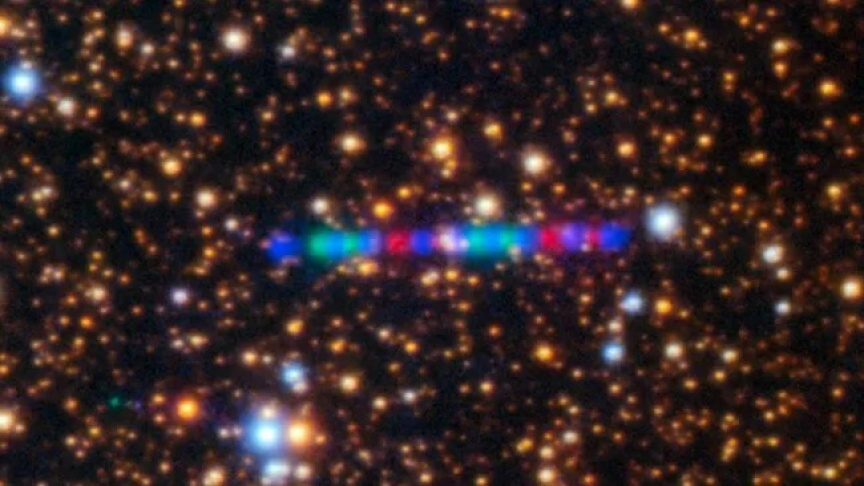
A timelapse photo transforms 3I/ATLAS into a giant 'cosmic rainbow', captured by the International Gemini Observatory in Hawaii. (Photo/Live Science)
There has been significant news coverage about comet 3I/Atlas since its discovery on July 1.
Simply put, 3I/Atlas is a comet that has come from another star system far, far away. This makes it an "interstellar object." It's only the third of its kind ever to be confirmed. The "3I" in its name stands for "third interstellar" object.
The comet has garnered attention due to its status as the third confirmed interstellar object to pass through our solar system, following 1I/‘Oumuamua (2017) and 2I/Borisov (2019).

Major outlets like NASA, BBC Sky at Night, Space.com, Newsweek, and The Guardian have published articles detailing its discovery, trajectory, and scientific significance.
On the other hand, some sensational claims, particularly from Harvard physicist Avi Loeb suggesting it could be alien technology, have fueled public interest and debate, though these are widely disputed by other astronomers as speculative.
Social media discusses its nature, composed of water ice and organic molecules. Its large estimated size (7–12 miles wide) and potential age (up to 7 billion years) have also fueled conspiracy theories and doomsday scenarios.
'ALL BETS ARE OFF': Harvard professor Dr. Avi Loeb (director of @GalileoProject1) joined FOX 10 Talks today on the third interstellar object to enter our solar system. Watch his warning on the possibility that 3I/Atlas could be from a 'hostile' alien intelligence.@FOX10Phoenix pic.twitter.com/MHXkkjJfJa
— Trenton Hooker (@trentonhooker) July 30, 2025
So let’s clear up the myths with simple facts.
Myth: 3I/Atlas is an alien aircraft.
This idea comes from the dramatization of a non-peer-reviewed paper by Harvard scientist Avi Loeb, suggesting its size, lack of cometary outgassing, and close approaches to Venus, Mars, and Jupiter are statistically unlikely for a natural object.
Fact: 3I/Atlas is a natural comet originating from interstellar space.
Most scientists, like those at the European Space Agency, think 3I/Atlas is a comet, not a spaceship. They’ve seen it release gas and dust, which comets do when they get close to the Sun. Loeb himself says it’s probably natural, framing his theory as a pedagogical exercise.
Myth: The comet is going to crash into Earth or cause some kind of disaster.
With global tensions so high, and comets seen historically as harbingers of doom, 3I/Atlas has sparked a lot of doomsday theories on social media. Its path is weird because it’s big, goes close to planets, and doesn’t act like most comets.
Fact: 3I/Atlas poses no threat to Earth.
NASA and Hubble have their eyes on the comet, with James Webb joining soon, scientists confirm that 3I/Atlas will safely pass Earth by 170 million miles—farther than the distance to Mars.

Social media loves sensational news, and aliens definitely grab attention. In the Maldives, where soaring inflation and rising sea levels are real concerns, 3I/Atlas’s distant, harmless path reminds us to focus on tangible issues rather than cosmic fears.
3I/Atlas is a rare, fascinating cosmic visitor, not aliens coming out of the ‘Dark Forest’.